Sometimes our imagination challenges us to use our accumulated information and experience to do things differently than we should for the right result. It happens when the artistic spirit urges us to create something unique, and right is not enough. We want the "perfect" of our vision.
The imperfections in wood are no longer considered as defects but on the contrary, we have seen how they are highlighted to emphasize the natural look. Moving on, you might also lose a little control over the finish. Let's see what happens if we don't want it to come out perfect. Often, creative curiosity pushes us to make exactly those mistakes that the experts insist on pointing out (and rightly so), in order to achieve the spectacular result we want. What if inspired by the effect, colour migration, for example, recognized as a defect, would be used as a coloring technique. We would have control only over the choice of color palette, the amounts and percentages of color or water, and the technique - a provoked, chaotic and uncontrollable unleashing.
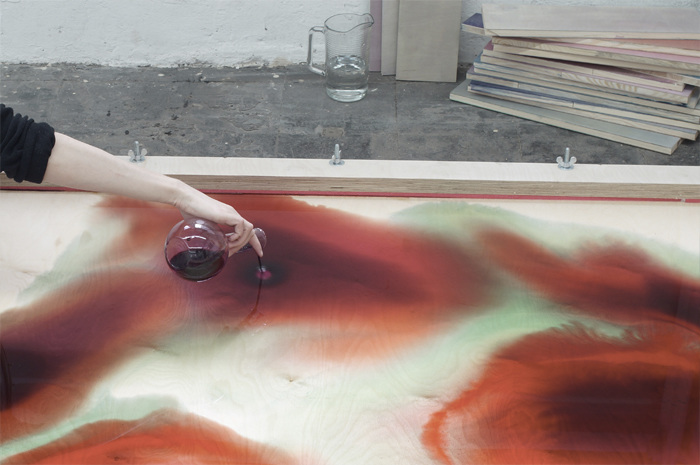
The result is a special polychromy and pattern with random interweavings of new colors, gradations and shades that settle in a unique way on the wood as if in a continuous movement.

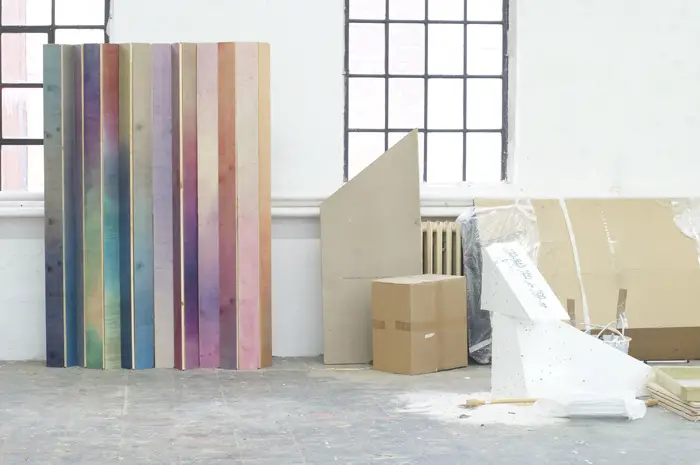
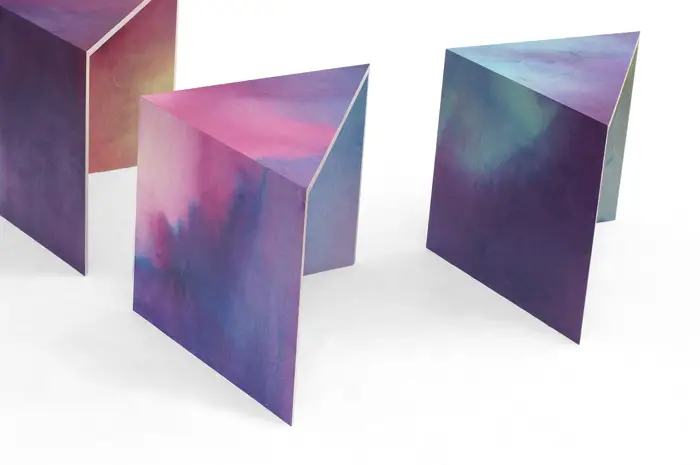
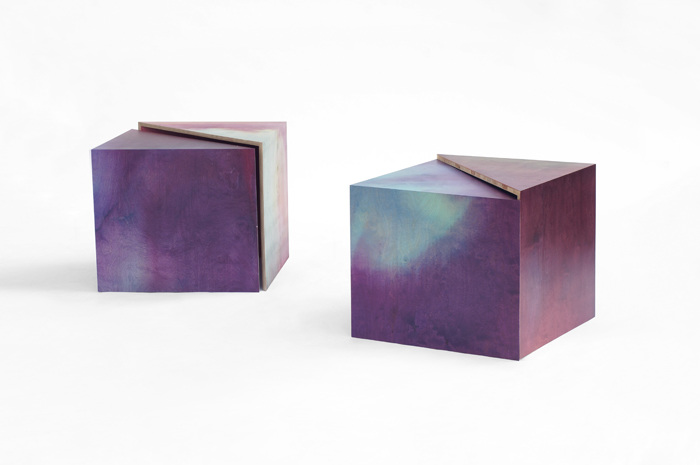
This time we've rehabilitated a flaw and moved it from the 'avoid to try' category. So watch out, if you keep on informing yourself you might get good, really good and come up with all sorts of interesting and original ideas 😉


























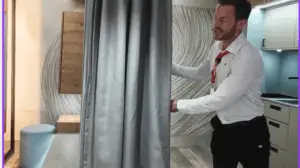



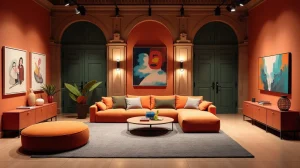





It would be interesting to present the technology...in this format the article is "minimalist"
The technology is quite simple. Water is poured onto the board on which the effect is to be achieved so that the wood is wet (in excess). It is good to put higher edges on the sides of the boards to prevent the colours from dripping before mixing. Then, from place to place, according to each person's discretion, pour water-soluble staining solutions of different colours. These will blend naturally. The wood must be wet. Otherwise the colours migrate very little. Finally, the edges are folded to remove the excess (if any) and the panels are left to dry. After drying, any transparent finishing system can be applied to protect the effect. In order not to alter the colours at all, we recommend the solvent acrylic system (1-2 coats of primer, sanding, one coat of varnish).